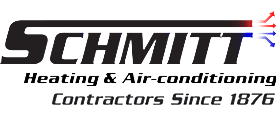Your HVAC system is an amazing invention. It keeps you cool in summer and warm when the weather starts to cool down. Though your HVAC system is crucial to maintaining home comfort for you and your family, it is not exactly the most attractive piece of machinery. To improve the look of your home’s exterior, try concealing your outdoor HVAC unit. With the DIY tips we have listed below, you can easily camouflage the AC unit without impairing the functionality.
How to Conceal Your Outdoor AC Unit
Concealing your outdoor AC unit doesn’t have to be difficult or expensive. Here are our favorite DIY tips for hiding your outdoor HVAC unit:
1. Fence it.
Create an adorable picket fence or lattice to surround your air conditioning unit. Add a statement piece, such as a wooden heart, in the middle of the fence or hang other decorative outdoor decorations from the outer side of the fence so that it becomes a part of your living space.
2. Make Something Grow.
If you have a green thumb, then you would be thrilled with a vertical garden. Essentially, you cover the surrounding area of your air conditioning unit with wooden pallets which can feasibly grow your flowers or greenery inside the crevices. This is a great way to create a tiered planting space for herbs, small florals, or succulents.
3. Hedge it.
Plant hedges or other plants around the air conditioning unit to help keep it concealed. If real plants are not your thing, consider an artificial outdoor boxwood hedge. This option is quite simple, but still gets the job done. When planting hedges or hiding the unit behind potted plants, make sure that all of the shrubbery is at least one foot away from the unit to avoid debris clogging the unit.
4. Create an edifice.
Make a faux brick wall or other barricade between your AC unit and the rest of your backyard. You can make this wall out of a variety of materials, including two-by-fours, pallets, or other types of wood. Again, make sure that there is room for the unit to breathe and be maintained.
Remember: In any case, you need to make sure NOT to attach anything directly to your outdoor condenser unit or block it in so that it cannot be accessed by an HVAC technician. In the event that your air conditioning breaks down or requires inspection, this area will need to be cleared. Make sure your beautification can be moved!
Regardless of how you want to beautify or conceal your air conditioner, there are plenty of options out there to look into. It never hurts to use your creative knowledge, either. You can start something trendsetting! For all of your other HVAC needs, contact us now.


